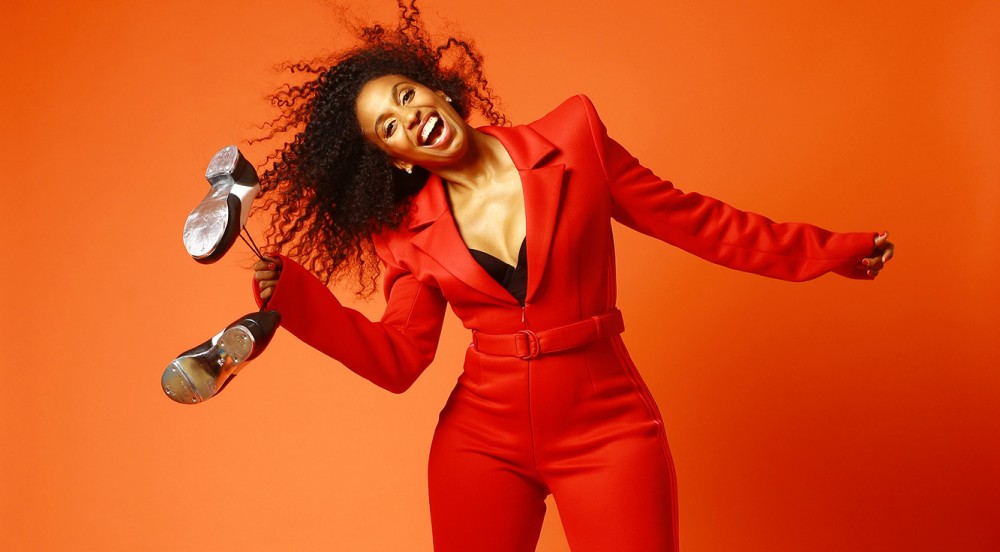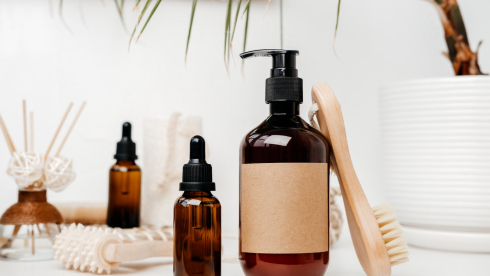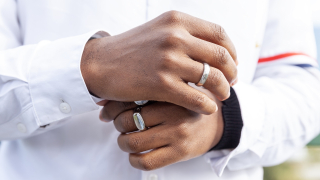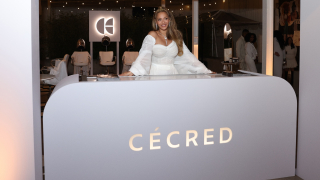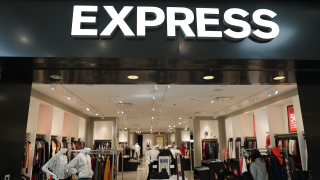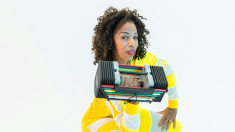And the secrets behind the film’s amazing water dance number.
Choreographer Chloé Arnold had a simple goal for Spirited, the Scrooge-inspired musical starring Octavia Spencer, Ryan Reynolds and Will Ferrell, currently playing on Apple TV+. She wanted to bring tap dancing back to the masses. She and her sister Maud Arnold co-founded Syncopated Ladies, a tap dance band that showcases the talent and artistry of Black female tappers, and she knew it was her personal duty to bring that to the screen.
“I wanted to show the world how I see Black women in the art of tap dance in a very new way,” she shares with EBONY, “to bring that soulfulness, that rhythm and that syncopation to this film.”
Originally Spirited wasn’t going to feature the art form, “but as a tap dancer from the school of Debbie Allen, you come in knowing what it is that you wish to accomplish, and you try to get folks to see your vision,” Arnold shares.
The result? Stunning dance sequences that feature an all-inclusive cast. “We have dancers ranging in age from seven to 74,” Arnold declares, "with strengths in all dance genres. In rehearsals, we had a circle for dancers to do their style: West African dance, tap, hip hop, jazz and abstract modern. I wanted to feel in all those spaces and I think that's what we see throughout the film.”
Arnold shares more of her vision for Spirited and why it’s an homage to past Black artists who were never properly recognized for their contributions to the American musical genre.
EBONY: The movie dance scenes are absolutely gorgeous. How did you approach putting it together?
Chloé Arnold: We had seven months to work on the film, and we really used every morsel of that seven months, because there were many components at play. When I first got the script and the music, I just started to brainstorm. I hired associate choreographers that could complement my vision and my skills, women that inspire me like Ava Bernstein Mitchell and Martha Nichols. It’s not very often you have Black women in this position. Octavia cried when she saw us. We FaceTimed her for the first time so she could meet her team and she didn't know we were Black women. This was a unique moment in equity that felt so beautiful.
What was your vision for the sequences?
There are nine dance pieces in the film’s story arc, so we figured out what we are getting at emotionally in each song. I wanted to take the African diaspora of movement and translate that into a musical in a way that represents the diversity of the diaspora and could make people at home feel connected to musicals, which were not always an inclusive space. I was able to hire 90 dancers, and you see every type of representation. I have all body types and every ethnicity to make people feel like the holidays are for all of us. Black people were quintessential in the creation of musicals and essential in making them popular but were never given proper compensation and residuals. We were cut out of films presented in the South. I wanted this moment to be an ode, nod and thank you to everyone who paved the way that wasn't given that respect, particularly Black women in tap, who were erased in so many ways from history, and not given roles as choreographers.
What a beautiful sentiment to put into the film.
It’s my personal mission, and this was a massive way to do it in a film that makes people feel hopeful. That's the point of the film, to make people know everything we do matters, every action you take and every word you say has a ripple effect. I think that that kind of conscientiousness within the film requires you to have this kind of inclusivity.
What about that water sequence at the end?
Our director had this vision that there would be a little water on the floor, something they could fix in post-production. What's great about working with AppleTV is you go, “Well, what about this,” and they say, “Oh, sure, we can try that." We ended up experimenting with pools of water outside at different levels to see how it moves and splashes with tap and hip hop, and can we flip in it? In the studio, they were building our pool, which turned out to be 50x50 ft. They kept pumping in fresh water with fountains behind in the backdrop.
You have tap dance legend Dianne Walker featured in the movie.
Yes! We were shooting and I said, Aunt Dianne, do you want to come and observe? The next thing you know, she was in the movie, which is amazing. There's no greater honor for me than to be able to honor one of my teachers and a Black woman tap dance pioneer who paved the way for us. I’m just very thankful because we've learned that we must claim our voice. We must command respect and credit in order to not be left out, forgotten or erased
How can we get more young Black children into tap dancing?
My sister and I have the Chloe & Maud Foundation, and we have a program called "Tap into Life,” a free after-school tap program in inner-city schools. We get tap shoes into elementary schools which lays the foundation young. We’re about to expand to New York and Washington D.C. It’s our mission is to make it a nationwide program. During the pandemic we had 40,000 kids dancing for free online through our programs. We're getting black kids all around the nation to appreciate and celebrate their culture and history and know that this is a part of the Black experience in America, that tap dance comes out of African dance and music. We can wrongly associate tap dance with negative stereotypes, but dancers were the first activists in entertainment. Artists like Bill "Bojangles" Robinson refused to perform in blackface and because he was so famous, he was able to shift this story and command greater respect. It was these artists’ sacrifices that made it possible for all of the incredible works and talent we're seeing from Black people in Hollywood today. I want kids to feel proud of the history of tap dance as a form of activism and expression that really communicates and embodies the necessity for freedom.




